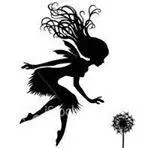For English review, please scroll down.
A Book of Bees: And How to Keep Them הוא ספר שנע בין ממואר אישי למדריך כוורנות, אבל בעצם הוא הרבה יותר מזה: עדות של אישה שמחפשת משמעות חדשה לחייה, ומוצאת אותה בתוך זמזום דבורים. סו האבל מתארת את המעבר שלה לאוזרק, מקום שבו לא היו כוורניות כשנכנסה לתחום, ואת הדרך שבה הכוורות הפכו עבורה לעוגן קיומי ולפרנסה. היא טוענת שכל אחד צריך דבורים, לפחות שתי כוורות, כמעין סיסמת חיים שמכילה בתוכה פילוסופיה שלמה: קשר עם הטבע, עבודה סבלנית, והכרה בכך שהחיים מורכבים מיחסי גומלין הדוקים.
הספר חושף גם את האלמנט המגדרי: באזור שמרני כמו האוזרק, אישה שעוסקת בכוורנות נחשבה כמעט חריגה. האבל מתארת את הדעות הקדומות, את חוסר הקבלה, ואת התחושה של אישה שמנסה לחרוש לעצמה דרך במקצוע שנחשב "גברי". זה מעניק לספר רובד ביקורתי, אפילו פמיניסטי, בתוך סיפור שנראה לכאורה טכני.
האבל שוזרת בתוך הסיפור שלה גם היסטוריה של הכוורנות. היא מציינת את לורנצו לנגסטרוט, שהמציא ב־1851 את הכוורת המתפרקת ורשם עליה פטנט שנה לאחר מכן. הכוורת הזו, שמאפשרת גישה נוחה לחלות ומונעת מהדבורים להדביק אותן בפרופוליס, שינתה את פני התחום כולו. מעניין במיוחד שהמצאה זו נולדה גם היא מתוך חוויה אנושית שבירה: לנגסטרוט פנה לטיפול בדבורים כדי להתמודד עם מחלה נפשית שממנה סבל במשך מחצית חייו.
בחלקים מסוימים הספר ממריא ונוגע באמת באותו קסם נסתר שבין האדם לדבורה: רגעים של תצפית, הבנה, קצב אחר של חיים. אבל בהמשך, כשהאבל מתמקדת יותר מדי בהסברים טכניים של טיפול בכוורות ובגידולן, משהו מהקסם מתפוגג. החלקים האלה מרגישים יותר כמו מדריך שימוש מאשר ממואר חי.
ובכל זאת, יש משהו ייחודי בספר הזה. הוא לא ספר הדרכה טהור, וגם לא אוטוביוגרפיה נקייה. הוא טקסט היברידי, שמחזיק בתוכו את המתח בין הטבע והאדם, בין שיגעון לריפוי, בין שגרה לבין פלא מתמשך. הוא מראה כיצד מתוך עיסוק לכאורה טכני, אפשר לחשוף עולמות שלמים על מגדר, על בריאות נפשית, על קהילה ועל החיפוש אחר שייכות.
A Book of Bees נשאר איפשהו באמצע, לא רק ממואר אישי ולא רק מדריך כוורנות. בדיוק בגלל זה הוא תפס מקום כפול גם במדף הממואר וגם בעיון, כטקסט שחוצה גבולות ומסרב להתיישב בז’אנר אחד.
A Book Of Bees: And How to Keep Them/ Sue Hubbell
Kindle Edition, 1988, 208 Pp
דירוג SIVI –
איכות אודיו –

A Book of Bees: And How to Keep Them by Sue Hubbell is a hybrid work, part memoir and part beekeeping manual, but in truth it is much more: the testimony of a woman searching for a new purpose, who finds it in the hum of bees. Hubbell describes her move to the Ozarks, a place where there were no female beekeepers when she arrived, and how beekeeping became both her livelihood and her anchor. She argues that everyone should have bees, at least two hives, a kind of life philosophy built on patience, interdependence, and living in rhythm with the natural world.
The book also touches on gendered prejudice: in the conservative Ozarks, a woman entering the field of beekeeping was viewed as something unusual. Hubbell depicts the skepticism and dismissiveness she faced, adding a feminist undercurrent to her narrative.
Woven into her story is the history of beekeeping itself. She writes about Lorenzo Lorraine Langstroth, the American who invented the modern movable-frame hive in 1851 and patented it in 1852. This hive, which maintained consistent spacing and prevented bees from sealing combs together with propolis, revolutionized beekeeping. Intriguingly, Langstroth turned to bees partly as a way to cope with his lifelong mental illness, suggesting that the relationship between humans and bees has always carried a layer of healing as well as labor.
At its best, the book captures the wonder of that human–bee connection: moments of observation, discovery, and quiet awe. Yet, when Hubbell turns too deeply toward technical explanations of hive management and bee behavior, the magic slips, and the book leans more toward a manual than a memoir.
Still, there is something distinctive here. This is not a straightforward how-to guide, nor a pure autobiography. It is a hybrid text that carries within it the tensions between nature and humanity, madness and recovery, labor and wonder. It shows how a seemingly technical occupation can reveal broader truths about gender, community, fragility, and the search for belonging.
לגלות עוד מהאתר Sivi's Books
Subscribe to get the latest posts sent to your email.

